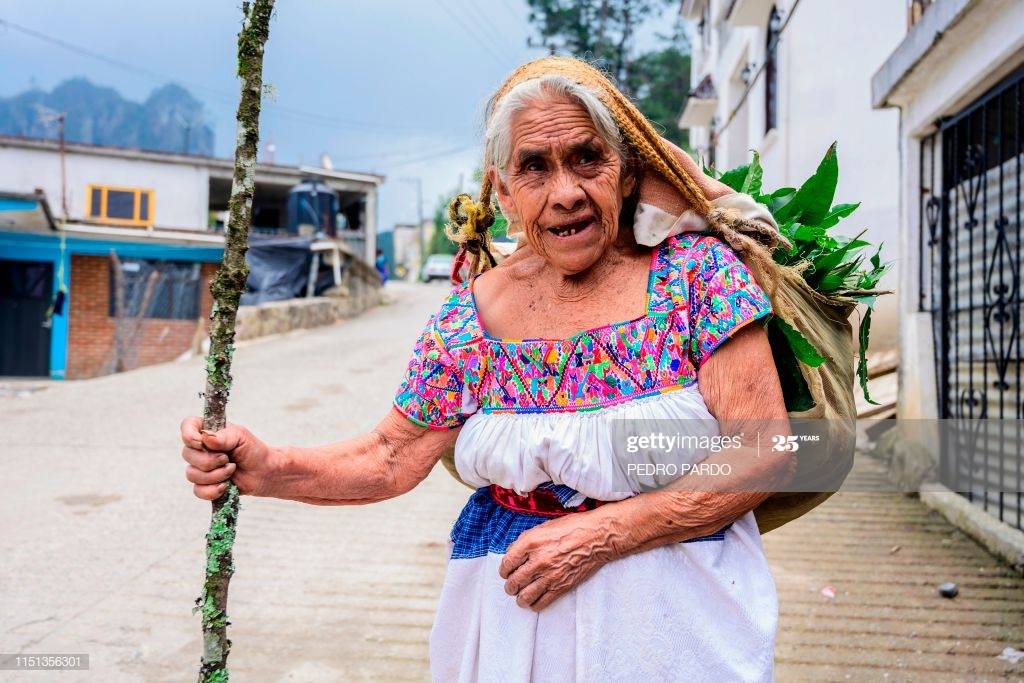
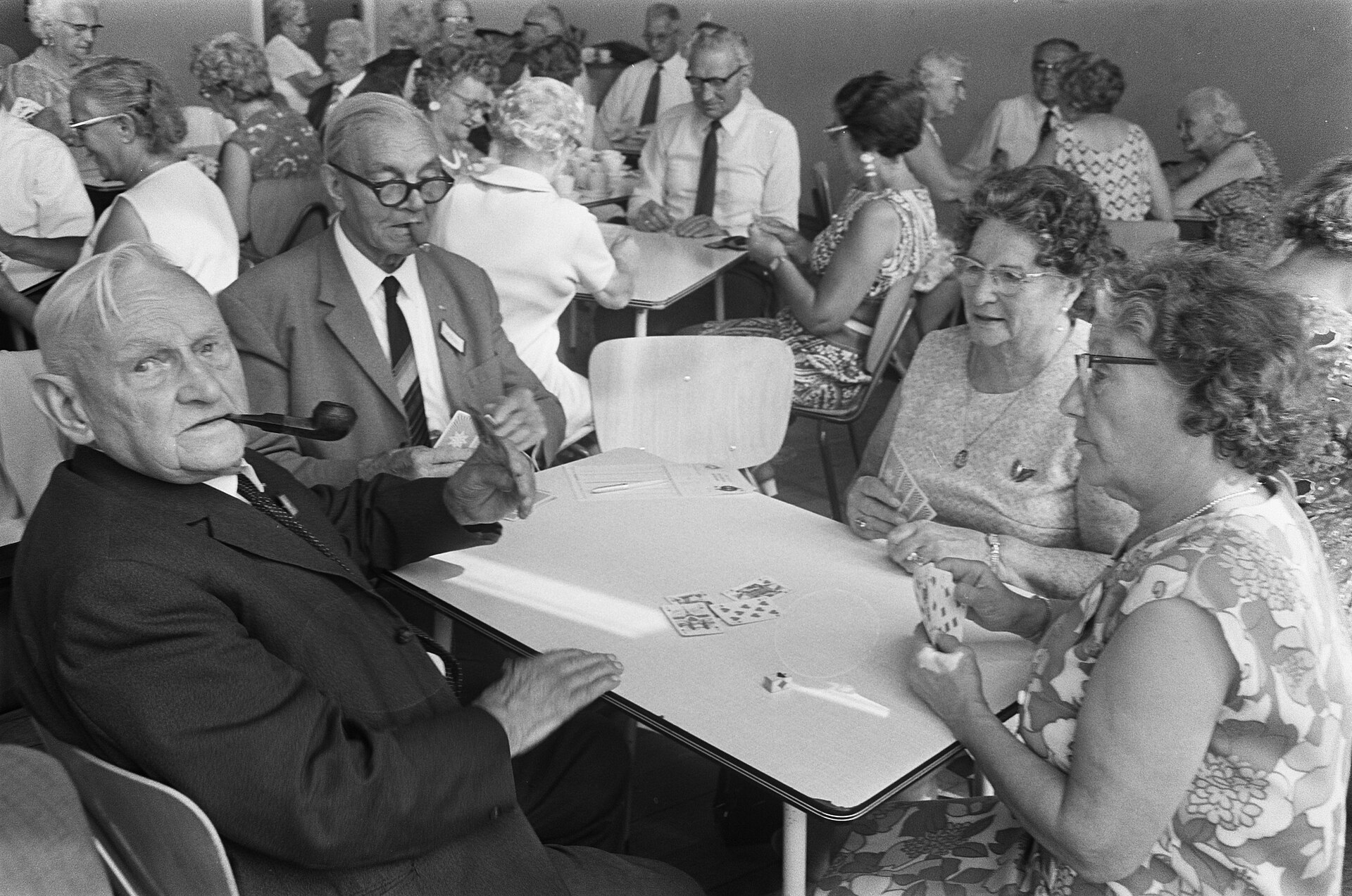

グローバル老年学の提唱
Proposal for Creating Global
Gerontology in a Hyper Aged Community
池田光穂
(概要)
人類集団の長寿化と出生率の緩慢な低下が、地球人口 の高齢化を推し進めている。それに呼応しグローバル・ヘルス&エイジングは世界保健機関が推進する政策課題の中でも高い位置を占め、21世紀以降グローバ ル老年学という研究領域が登場する。本研究課題は、世界の高齢化率を高・中・低に分け、それぞれの代表的な社会を対象に(i)加齢価値観の近年の変化、 (ii)当該社会が捉える加齢現象の悲観化/楽観化傾向の検証、そして(iii)高齢化文脈と安楽死選択の社会分析を通して、グローバル老年学のパラダイ ムチェンジをめざす。D・カーネマンのプロスペクト理論にもとづくフレーミング効果分析を参照しつつ、統計資料のメタ分析、現地訪問調査による住民ならび に専門家へのインタビュー等の質的調査法を駆使して、最終的にグローバル老年学の新たな基本カリキュラムを構想することで、各地の研究成果と大学や大学院 研究科での教育を直結させる実践モデル提案の道筋をつける(→一般的情報については「老年学」 を参照のこと)。
(1)本研究の学術的背景、研究課題の核心をなす学 術的「問い」
11世紀のアヴィセンナの時代に老人ケアの処方が登 場するが、老年医学/老年学は、その名称を提唱したイリア・メチニコフを嚆矢として第二次大戦中の1940年代にその基盤がつくられ、米国老年医学会が創 設されるのは1945年である。米国での老年学研究の隆盛は、戦後のサイバネティクスや生物工学などの研究との影響関係をもち1960年代にピークを迎 え、1970年代に入ると米国の医学校で老年学が通常のカリキュラムに組み込まれる。これは西洋社会の高齢化の進展とそれに対応する医科学研究からの学術 的応答と考えることができる。老年学はカリキュラムに組み込まれることで、ノーマル・サイエンス化が始まり、生物医学のみならず、公衆衛生、疫学、さらに は社会科学(e.g.社会福祉学)や人文学(ヒューマニティーズ)を取り込み、世界の「人口爆発」後の状況に対処する「問題にもとづく科学」としての学際 科学に成長する。21世紀ニューミレニアム以降は、世界人口の高齢化とそれに対する行動計画の策定が喫緊の課題になる。
本研究で定義する「グローバル老年学(global gerontology)」とは、この時期に成立した欧米での老年学研究に加えて国連や各国のシンクタンクが検討をはじめたグローバル・ヘルス&エイジン グ(WHO, 2011)での地球レベルでの加齢現象に対処する国際的な取り組みという実践学のことである。このような研究の取り組みは政府系、非政府系ならびに民間の 製薬企業あるいは高齢化に対処する社会福祉関連産業において、生物医学から介助システム、バイオメカニクス、脳科学や認知行動に関わる研究、さらには疫学 や公衆衛生学まで多岐にわたる。すなわちグローバル老年学は、複数の学問ディシプリンが関与する総合学問である。
本研究の核心をなす学術的「問い」は、この寿命の延 伸に伴う現象に直面する世界の人々が加齢に対して抱く集合的イメージとその時系列的変化にある。その問いは次の3つに具体的に分けられる;(i)加齢に関 する文化人類学的研究(「老年人類学」)が主張してきた〈加齢に対する価値観〉や〈老人に対する社会的態度〉は文化的に決定されるという主張(=パラダイ ム)は、当該社会の加齢現象や生物医学の知見の社会的流布により、どの程度変容を受けるのか[加齢価値観の近年の変化]:(ii)多くの社会で加齢に対し て悲観的なイメージと楽観的なイメージがあるが、人々はどの程度の悲観的/楽観的な社会イメージを「変化」させているのか[当該社会が捉える加齢現象の悲 観化/楽観化傾向の検証]:そして(iii)伝統社会におけるかつて実行された記録のある老人遺棄や老人殺害の慣行と、西洋先進社会でさまざまな論争や反 対運動がありながら実践しつつある安楽死(euthanasia)を論理的/法的/文化的に比較考量することを通して、高齢化への悲観化/楽観化イメージ が、高齢者主体の安楽死選択にどのように影響を与えるのか[高齢化文脈と安楽死選択の社会分析]についてである。
(2)本研究の目的および学術的独自性と創造性
本研究の目的は、グローバル老年学を科学社会学的に 分析し、グローバル老年学の可能性と限界、将来の方向性を予測することである。さらにグローバル老年学を「問題に基づく科学(Problem-Based Science, PBS)」として捉えなおし、具体的なカリキュラムとして試行的に提唱することを通して、この領域のパラダイムチェンジをめざすことにある。
科学社会学は、科学者と彼/彼女らが実践する科学的 営為を、社会的営為としてみなし、それを社会学の理論や方法を使って分析する学問である(池田 online)。グローバル老年学は、老年学を形成するそれぞれの基礎学を、グローバルな文脈のなかで加齢の普遍性一般性と地域的特性の多様性を研究す る。そして政策に関与し、個別の現場では高齢者やそのケアにたずさわる人をエンパワーするという実践的な総合学という性格をもつ。WHOは2017年から の9年間を「認知症に応答する公衆衛生のグローバル・アクション計画(global action plan on the public health response to dementia 2017-2025)」とし、超高齢化社会にとっての喫緊の課題である認知症者の人権回復、エンパワメント、リスク低減、学術研究の推進、全地球的な広報 を提起している。他方、文化人類学者の探究にも関わらず、老人遺棄や老人殺害の実態はよくわかっていない。だがこの慣行は近代社会における病理現象として の老人虐待の変種などではなく、遺棄者や殺害者が将来同様の運命を自ら享受するという点で特殊な人口維持と共同体の資源管理メカニズムであることを、池田 (業績7.)は明らかにした。本研究の学術的独自性とは、グローバル老年学に不可欠な世界の多様な老人や老化に対する文化的態度を、その学問領域に正確に 位置づけることにある。またその創造性とはその質的調査から得られるエビデンスをもって、グローバル老年学を「問題に基づく科学」として捉えなおし、その 具体的なカリキュラムとして試行的に提唱することにある。
(3)本研究で何をどのように、どこまで明らかにし ようとするのか
上掲(1)で本研究の学術的「問い」を提示した。そ こで焦点化される課題は次の3点である。
(i) 加齢価値観の近年の変化
(ii) 当該社会が捉える加齢現象の悲観化/楽観化傾向の検証
(iii) 高齢化文脈と安楽死選択の社会分析
このことを明らかにするために(1)高齢化の社会問 題に関する文献調査とメタ分析、(2)高齢化の社会問題に関する国内訪問調査、(3)高齢化の社会問題に関する海外訪問調査、(4)「問題に基づく科学」 としてのグローバル老年学の教育フィージビリティー研究会を組織する。方法論は、言説分析やエスノグラフィーなどの質的調査法を採用する。理論分析はプロ スペクト理論にもとづくフレーミング効果分析[5頁囲み部分で指摘]を参照しながらおこなう。高齢化比率や安楽死選択に関するジェンダー格差は多文化多民 族間の比較により一層明らかにされうる。最終的に、質的調査から得られるエビデンスを「問題に基づく科学」としてのグローバル老年学に位置づけ、その基本 カリキュラムを構想する。
調査対象となる国と地域を、【高・高齢化国】【中・ 高齢化国】【低・高齢化国】の3つに分ける。すなわち(a)【高・高齢化国】日本(高齢化率27%,2016年, Global NOTE提供,以下同様)とベネルクス三国(18-19%)、(b)【中・高齢化国】韓国(14%)、(c)【低・高齢化国】スリランカ(10%)とグア テマラ(5%)のマヤ先住民地域、である。それに加えて参照調査地として研究分担者たちが調査経験とデータを積んできたエチオピア(4%)とケニア (3%)を加える。また日本では、都市から離島まで多様性のある長崎県(28.9%:2016内閣府)と地域的多様性が少ないが同程度の高・高齢化県であ る新潟県(29.1%)と都市住民が多い東京都(22.5%)の3箇所での取り組みについて調べる。東京都を加えたのは2007年以降の世界の都市住民と 農村住民の逆転を踏まえた考慮が必要だからである。
(1)高齢化の社会問題に関する文献調査とメタ分 析:高齢化率の高い国(日本、ベネルクス三国)おける高齢化の社会問題に関する文献調査をおこなう(全員)
(2a)高齢化の社会問題に関する国内訪問調査:長 崎県、新潟県、東京都において、基本的な疫学資料や、地元の取り組みについて調べる(全員)。
(2b)高齢化の社会問題に関する海外訪問調査: 【高・高齢化国】のオランダを含むベネルクス三国、【中・高齢化国】である韓国、【低・高齢化国】であるスリランカ、グアテマラ、ケニア、エチオピアにお ける高齢者の社会における位置づけや、当該地域が抱えている問題を明らかにする。老年学ならびに国際保健のフィールドワーク手法、保健教育や医療社会学に おける専門家への聞き取りを、老年学と医療人類学的方法にもとづく、専門家への聞き取りとインタビュー訪問調査をおこなう。
(3)教育フィージビリティー研究会:「問題に基づ く科学(PBS)」のカリキュラム化に関する共同研究会を、日本国内の調査県である、長崎・新潟・東京において全員の参加でおこなう。補足的な会合をメー リングリストやテレビ電話会議(Skype, FaceTime)を活用して行い、研究経費の効率的運用に努める
(1)本研究の着想に至った経緯
欧州における安楽死ならびに自殺扶助法案の成立 (Norwood 2009)や、日本の「団塊の世代」が後期高齢者になることでのケア供給が破綻するとされる「2025年問題」など生命倫理学、医療経済学あるいは関連の ジャーナリズム分野では高齢者問題をきわめて深刻化して捉えている。この状況を「寿命の延伸に煩悶する地球社会」と呼んでもいいだろう。この圏域では通常 の加齢を迎える人の他に、認知症を抱える人、元薬物利用者、心身のハンディキャップをもつなど、すべての人々に降りかかる課題である(WHO 2016;業績13)。この悲観的イメージを基調とする没落の未来像はどこから去来するのであろうか。私たち研究グループが長年培ってきたグローバル・ヘ ルスと高齢化社会への対応という研究の蓄積と、この問題を関連付けた新たな研究計画に着手することとした。これまでのグローバル老年学に関する文献の豊富 な渉猟を加えて、それぞれの文化での高齢者個人の自己イメージ、加齢現象への社会的意味づけ、様々な社会的文脈における高齢者への態度、そして高齢者ケア に対する社会規範と態度などが多様な実態が明らかになった。そこには悲観論/楽観論を超えた高齢者に関する伝統知の可能性を読み取ることができる(業績, 5,6,7,9,10,11,12,15,16,17,20,26,27)。
(2)関連する国内外の研究動向と本研究の位置づけ
高齢社会に向かう世界的動向にはおびただしい統計的 分析や人口学的、疫学的、公衆衛生学的研究の蓄積があり、メタ分析についても専門誌に毎回多くのレビュー論文が収載されている。また高齢者文化の医療民族 誌学的研究も近年のグローバル・エイジング関連での研究基金の助成により多くの研究がある。しかしながら先に(1頁)述べたグローバル老年学を、最新の研 究成果利用しつつそれを統合しようとする研究は存在しない。研究の局所領域での変化が日進月歩だからである。それゆえに、本研究課題が目的とする、総合的 評価にもとづいて「問題に基づく科学」としてグローバル老年学のパラダイムを動態的に把握しつつ教育プログラムを開発する試みは皆無である。本研究チーム の池田と徐、およびNはPBLをつかったアクティブラーニングの研究の蓄積がある(業績,2,3,9,14,21,24,25)
本研究の特色は、そのような混とんとしたグローバル 老年学の理論的新展開の可能性として行動経済学分野から提唱されたプロスペクト理論を援用することにある。シンプルで明快なこの理論によると、この高齢化 に関する悲観的フレーミングと、さまざまな社会における高齢者と協働する楽観的な現場感覚のあいだには、明らかな非対称性がある。それは、高齢化に関する 社会科学による統計資料などのデータの解釈が、現場感覚に由来するヒューリスティクスからのバイアスにより歪められたり、逆により正しい側に修正されたり するということと関連しているようだ(Kahneman 2011)。そのような仮説と実態との突き合わせを通してグローバル老年学のパラダイムチェンジをめざす。
(3)これまでの研究活動(番号は業績 に対応)
研究代表者の池田は、ラテンアメリカを対象とする医 療人類学の基礎研究(1,29,31)を皮切りに、(研究分担者のN・Y・Mとの共同で)終末期医療と自己決定、長寿社会での認知症ケア、緩和ケア の感覚経験、高齢者の外傷後成長(PTG)と認知症予防などの調査に携わり、多くの成果発表をおこなってきた (5,10,11,12,15,1617,19,20,26)。池田・N・M(5,11,12)は医療人類学者であり、Y(15,28)は公衆衛生 学を基にするグローバル・エイジング研究の第一人者である。徐(4,13)はHIVの保健教育と薬物利用者の社会的支援であるハーム・リダクションの実践 と理念に造詣が深い。とりわけ近年では、終末期緩和ケア、認知症者とのコミュニケーション(26,27)、日本国内の高齢者への看護とケアにおける外国人 の職場適応、また(研究分担者の徐との共同で)オランダにおける元薬物利用者の高齢化や福祉問題などの研究結果をもとに、大学院生向けのアクティブラーニ ング科目の主要な方法論である問題に基づく学習(PBL)の横断的な教育素材を提供し、授業開発手法の提言をおこなった(2,3,14,21,22)。こ の経験を本研究のカリキュラム提案に役立てる。
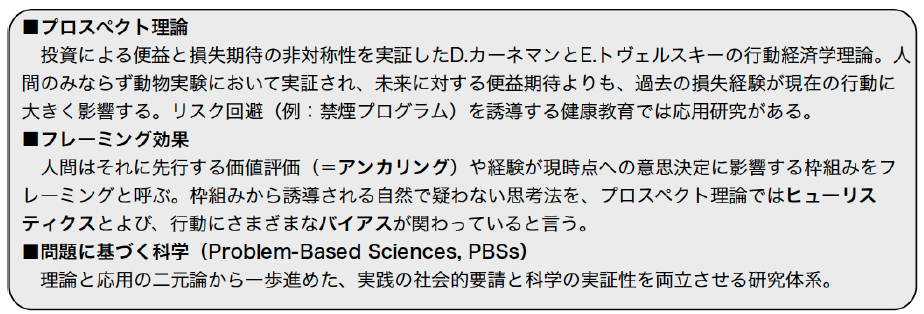 +
+
(4)準備状況と実行可能性
高齢化の社会問題に関する文献調査や、アフリカ、ス リランカ、ドミニカ共和国、メキシコの高齢者の生活実態についてはこれまでの科学研究費補助金の研究を通して、池田・N・Y・Mには十分の研究蓄積 がある。プロスペクト理論にもとづく悲観的フレーミング効果に関する知見については、池田・N・徐がPBLアクティブラーニングの教育方法を検討した際 に参照し、基本的な文献の収集と分析の途上ではあるが、研究を始められる態勢は整った(2,3,9,24,25)。つまり本研究の準備状況は「おおむね順 調」であると判断される。
本研究の実行可能性は、高齢者に関する近代知(=悲 観的フレーミング)と伝統知(=高齢化に対する両義的な態度)の可能性のあいだの齟齬、および実態=現実の有り様、という三つの視座を「問題に基づく科 学」(PBS)にどのように有益に取り組めるかということにかかっていると判断できる。これらの研究手順は以下のアルゴリズム過程で表現される。
以上の所見から本研究メンバーによる共同研究は実行
可能な状態にあり、すぐにでも研究に着手できる態勢にある。ウェブページも構築済みである(https://goo.gl/mKcznm)
+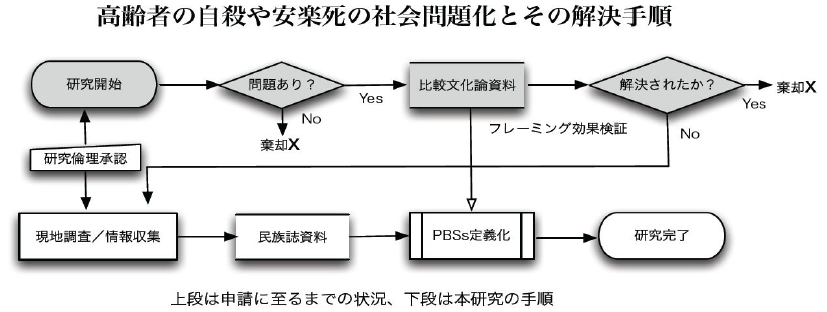
| 1.
池田光穂(2017)政治紛争のなかの先住民コミュニティ:グアテマラ・マヤ系先住民の文化と自治,Co* Design 2:1-16,査読有. 2. 池田光穂・徐淑子(2017)学習者から探究者へ:オランダ・マーストリヒト大学におけるPBL教育,大阪大学高等教育研究 5:19-29,査読有 3. 徐淑子・池田光穂(2017)薬物問題についての最近の動向と大学生を対象とした薬物乱用防止教育,Co* Design 1:67-84, 査読無. 4. 徐淑子・池田光穂・近藤千春(2017)オランダにおける薬物使用者へのケア・サポート資源と医療:ハーム・リダクションから離脱・回復志向的実践まで 『日本アルコール関連問題学会雑誌』18(2):59-65. 査読有. 5. 増田研(2017)「高齢化に向かいはじめたアフリカ社会:長期介護をめぐる潮流」『アフリカNOW』(日本アフリカ協議会)108:8-11. 査読有 6. Mitsuho Ikeda and Sookja Suh(2016), From Where does Our Health Come?: The Sociology of Antonovsky's Salutogenesis. Communication-Design 14:83-93. 査読有 7. 池田光穂(2016)「子殺しと棄老:「動物殺し」としての殺人の解釈と理解について」シンジルト・奥野克巳編『動物殺しの民族誌』57-97, 昭和堂, 365pp.査読有 8. 池田光穂(2016)アーロン・アントノフスキーの医療社会学:健康生成論の誕生『応用社会学研究』58:119-130. 査読有 9. 池田光穂,西川勝,野村亜由美(2016)認知症コミュニケーションの可能性とストレスコーピング『日本ヘルスコミュニケーション学会雑誌』7(1):1 -11. 査読有 10. 山本秀樹(2016)高齢都市居住者を支える「共助」の仕組み作りとその課題:ザンビア共和国ルサカ市における住民団体(CBO)の事例から『アフリカ研 究』90(1):85-92.査読有 11. 増田研(2016)「アフリカの人口高齢化:西暦2100年を見据えた調査と政策策定へ向けて」『アフリカ研究』90: 37-46. 査読有 12. 増田研(2016)「〈老いの力〉の未来を左右する少子高齢化」田川玄、慶田勝彦、花渕馨也(編)『アフリカの老人:老いの制度と力をめぐる民族誌』九州 大学出版会、pp.217-236. 査読無 13. Sookja Suh and Mitsuho Ikeda (2015), Compassionate Pragmatism on the Harm Reduction Continuum: Expanding the Options for Drug and Alcohol Addiction Treatment in Japan, Communication-Design 13:63-72. 査読有 14. 徐淑子・池田光穂(2015)健康教育における〈健康認識の個人化〉をうながす実践について『Communication-Design』12:23- 38. 査読有 15. Hideki Yamamoto(2015). Education for Sustainable Development: Community Learning Centers as the Platform for the Community Based Disaster Preparedness. International Affairs and Global Strategy 39(1) 32-36. 査読有 16. Ikeda, Mitsuho and Michael Berthin (2015) Epicurean Children: On interaction and "communication" between experimental animals and laboratory scientists. Communication-Design 12:53-75. 査読有 17. 増田研(2015)「アフリカに高齢化の時代が忍び寄る」『JANESニュースレター』22:8-10. 査読無 18. 池田光穂(2014)病気になることの意味:タルコット・パーソンズの病人役割の検討を通して『Communication-Design』10:1- 21. 査読有 19. 増田研(2014)「「長崎地元民」の構築:東濱町の竜宮舩における担い手の継続性とアイデンティティの層」『文化環境研究』7:40-48 . 査読無 20. 野村亜由美(2013)変動する生老病死.フィールドプラス,No.9,p.6.年, 査読有 21. 池田光穂(2012)ヘルスコミュニケーションをデザインする『Communication-Design』6:1-16. 査読有 22. 池田光穂(2012)看護人類学から人類学的看護へ『日本遺伝看護学会誌』10(2):49-59. 査読有 23. 増田研(2012)「国際保健分野における文化人類学的アプローチ:ローカルとグローバルの接合地点で調停役を買ってでる」『公衆衛生誌』59(3): 189-192. 査読有 24. 池田光穂(2011)拡張するヘルスコミュニケーションの現場、『保健医療社会学論集』22(2):1-4. 査読有 25. 池田光穂・西村ユミ(2010)「臨床コミュニケーション教育:PBLから対話論理へ、対話論理から実践へ」『日本ヘルスコミュニケーション研究会雑誌』 1(1):48-52. 査読有 26. A. Nomura, S. Honda, H. Hayakawa, S. Amarasinghe, K. Aoyagi.(2010) Post-Traumatic Stress Disorder Among Senior Victims of Tsunami-Affected Areas in Southern Sri Lanka. ACTA MEDICA NAGASKIENSIA, 55:41-46.査読有 27. Mitsuho Ikeda & Michael K. Roemer (2009). “Distorted Medicalization” of Senile Dementia: The Japanese case. World Cultural Psychiatry Research Review 2009, 4(1): 22-27. 査読有 28. Redsch O, Miyaishi S, Heinemann A, Fiedler G, Püschel K, Yamamoto H, Ishizu H.(2006) Comparison of German and Japanese general practitioners' awareness of suicide and attitudes toward patients with suicidal ideation. Acta Med Okayama. 2006 Jun;60(3):159-65.査読有 29. 池田光穂(2001)『実践の医療人類学—中央アメリカ・ヘルスケアシステムにおける医療の地政学的展開』世界思想社、390pp., 査読無 30. 池田光穂(2000)「病気の文明史」『生活の地域史』川田順造・石毛直道編,山川出版社, pp.258-289. 査読有 31. 池田光穂(1998)「保健活動——制度的海外ボランティアの過去・現在・未来」『人類の未来と開発』川田順造ほか編,岩波書店,pp.107-114. 査読有 |
人権の保護及び法令等の遵守への対応
1.本研究は、日本および海外での現地調査を予定し ているため、参与観察、インタビュー、民族誌的データの収集等において、個人のプライバシーに関わる情報を取得する可能性を有する。とりわけ、高齢化比率 や安楽死選択に関するジェンダー格差があるという実態に鑑み、ジェンダーへの配慮、ならびに高齢者への配慮という倫理面での対応を怠らないようにする。
2.研究情報の保護に関しては、調査対象者に文書お よび口頭において、事前に確認をとり、被調査者との信頼性を確保することに努める。また、データを記載したフィールドノートならびにパーソナル端末等は管 理を厳格にして漏えいがないように努める。また研究発表に関しては、個人情報と当人とが「連結可能」になる危険性をもつ場合は、必ず本人に照会するように する。また、関連する組織や個人と研究者の間に利益相反がおこる事項については、その都度チェックして関係機関に報告し、研究遂行による不利益がだれにも 生じないにように務める。
3.これらの調査上における個人情報の保護と「人を 対象とする医学系研究に関する倫理指針」(厚労省)等に記載されている理念を本研究に関わるすべての人と共有するように努める。また、この要綱等は研究の 各年度の初回の会合・集会のごとに印刷配布して、倫理上のミスコンダクトがおこらないように留意する。
4.研究代表者が所属する大阪大学COデザインセン
ターには、研究倫理委員会が設置されており、研究が採択されることがわかった時点で、審査のための具体的な調査項目に関する研究計画書を別途作成し審査を
受けるものとする。
●クレジット:池田光穂「人口高齢化と安楽 死選択に焦点をあてたグローバル老年学の提唱(Proposal for Creating Global Gerontology focusing Choice of Euthanasia in a Hyper Aged Community)」。この研究計画書は平成30 (2018)年度科学研究費補助金に申請した「人口高齢化と安楽死選択に焦点をあてたグローバル老年学の科学社会学的研究」の計画書の一部です。申請は平 成29(2017)年10月末です——2025年の時点でこのアイディアが採択されることはありませんでした。この研究のアイディアや内容を使って自由に 研究をされることは、問題ありませんが、もし2017年10月末以降に、完 全にこの内容に一致あるいは著しく合致するような研究計画書があり、このHPについての言及がなかった場合は、断りもなく自分のものとして剽窃している可 能性がありますので、くれぐれもご注意ください。研究の、先取権を尊重しない研究者は、尊敬に値することのない研究者であります。

☆以下の記述は「老年学」と
同じである。
| Gerontology
(/ˌdʒɛrənˈtɒlədʒi/ JERR-ən-TOL-ə-jee) is the study of the social,
cultural, psychological, cognitive, and biological aspects of aging.
The word was coined by Ilya Ilyich Mechnikov in 1903, from the Greek
γέρων (gérōn), meaning "old man", and -λογία (-logía), meaning "study
of".[1][2][3][4] The field is distinguished from geriatrics, which is
the branch of medicine that specializes in the treatment of existing
disease in older adults. Gerontologists include researchers and
practitioners in the fields of biology, nursing, medicine, criminology,
dentistry, social work, physical and occupational therapy, psychology,
psychiatry, sociology, economics, political science, architecture,
geography, pharmacy, public health, housing, and anthropology.[5] The multidisciplinary nature of gerontology means that there are a number of sub-fields which overlap with gerontology. There are policy issues, for example, involved in government planning and the operation of nursing homes, investigating the effects of an aging population on society, and the design of residential spaces for older people that facilitate the development of a sense of place or home. Dr. Lawton, a behavioral psychologist at the Philadelphia Geriatric Center, was among the first to recognize the need for living spaces designed to accommodate the elderly, especially those with Alzheimer's disease. As an academic discipline the field is relatively new. The USC Leonard Davis School of Gerontology created the first PhD, master's and bachelor's degree programs in gerontology in 1975. |
ジェロントロジー(/ˌdʒ↪Ll_292i/ JERR-ənʒ
JERR-ən-TOL-ə-jee)とは、老化の社会的、文化的、心理的、認知的、生物学的側面を研究する学問である。この言葉は1903年にイリヤ・
イリイチ・メチニコフによって造語された。ギリシャ語で「老人」を意味するγέρων(gérōn)と「研究」を意味する-λογία(-logía)か
らきている。老年学者には、生物学、看護学、医学、犯罪学、歯科学、ソーシャルワーク、理学療法、作業療法、心理学、精神医学、社会学、経済学、政治学、
建築学、地理学、薬学、保健衛生学、住宅学、人類学などの分野の研究者や実務家が含まれる[5]。 ジェロントロジーの学際的性質は、ジェロントロジーと重複する多くの下位分野があることを意味する。例えば、政府計画や老人ホームの運営に関わる政策問 題、高齢化が社会に及ぼす影響の調査、場所や家という感覚を発達させる高齢者の居住空間のデザインなどがある。フィラデルフィア老人医療センターの行動心 理学者であるロートン博士は、高齢者、特にアルツハイマー病患者に対応した居住空間の必要性をいち早く認識した。学問分野としては、この分野は比較的新し い。USCレナード・デイビス老年学大学院は、1975年に老年学における最初の博士号、修士号、学士号プログラムを創設した。 |
| History In the Islamic Golden Age, several physicians wrote on issues related to Gerontology. Avicenna's The Canon of Medicine (1025) offered instruction for the care of the aged, including diet and remedies for problems including constipation.[6] Arabic physician Ibn Al-Jazzar Al-Qayrawani (Algizar, c. 898–980) wrote on the aches and conditions of the elderly.[7] His scholarly work covers sleep disorders, forgetfulness, how to strengthen memory,[8][9] and causes of mortality.[10] Ishaq ibn Hunayn (died 910) also wrote works on the treatments for forgetfulness.[11]  An old couple in Hatay province of Turkey. While the number of aged humans, and the life expectancy, tended to increase in every century since the 14th, society tended to consider caring for an elderly relative as a family issue. It was not until the coming of the Industrial Revolution that ideas shifted in favor of a societal care-system. Some early pioneers, such as Michel Eugène Chevreul, who himself lived to be 102, believed that aging itself should be a science to be studied. Élie Metchnikoff coined the term "gerontology" in 1903.[12] Modern pioneers like James Birren began organizing gerontology as its own field in the 1940s, later being involved in starting a US government agency on aging—the National Institute on Aging[13]—programs in gerontology at the University of Southern California and University of California, Los Angeles, and as past president of the Gerontological Society of America (founded in 1945).[14] With the population of people over 60 years old expected to be some 22% of the world's population by 2050, assessment and treatment methods for age-related disease burden—the term geroscience emerged in the early 21st century.[15][16][17] |
歴史 イスラム黄金時代には、老年学に関連する問題について何人かの医師が執筆している。アヴィセンナの『The Canon of Medicine』(1025年)は、食事や便秘などの問題に対する治療法など、高齢者のケアについて述べている[6]。898-980年)は、高齢者の 痛みや状態について書いている[7]。彼の学術的な著作は、睡眠障害、物忘れ、記憶力を強化する方法、[8][9]、死亡の原因などを扱っている [10]。イシャク・イブン・フナイン(910年没)も物忘れの治療法について著作を残している[11]。  トルコのハタイ県に住む老夫婦。 14世紀以降、高齢者の数と平均寿命は世紀を追うごとに延びる傾向にあったが、社会は高齢の親族の介護を家族の問題として考える傾向にあった。産業革命が 起こるまでは、社会的な介護システムを支持する考えには変わらなかった。102歳まで生きたミシェル・ウジェーヌ・シュヴルールのような初期の先駆者たち は、老化そのものを科学として研究すべきだと考えた。エリー・メチニコフは1903年に「ジェロントロジー(老年学)」という言葉を作った[12]。 ジェームス・ビレンのような現代のパイオニアは、1940年代にジェロントロジーを独自の分野として組織化し始め、後に加齢に関する米国政府機関である国 立加齢研究所[13]の設立に関わり、南カリフォルニア大学やカリフォルニア大学ロサンゼルス校でジェロントロジーのプログラムを立ち上げ、アメリカ老年 学会(1945年設立)の元会長を務めた[14]。 2050年までに60歳以上の人民が世界人口の約22%を占めると予想される中、加齢に伴う疾病負担の評価と治療法-21世紀初頭にジェロサイエンスとい う言葉が登場した[15][16][17]。 |
| Aging demographics The world is forecast to undergo rapid population aging in the next several decades. In 1900, there were 3.1 million people aged 65 years and older living in the United States. However, this population continued to grow throughout the 20th century and reached 31.2, 35, and 40.3 million people in 1990, 2000, and 2010, respectively. Notably, in the United States and across the world, the "baby boomer" generation began to turn 65 in 2011. Recently, the population aged 65 years and older has grown at a faster rate than the total population in the United States. The total population increased by 9.7%, from 281.4 million to 308.7 million, between 2000 and 2010. However, the population aged 65 years and older increased by 15.1% during the same period.[18] It has been estimated that 25% of the population in the United States and Canada will be aged 65 years and older by 2025. Moreover, by 2050, it is predicted that, for the first time in United States history, the number of individuals aged 60 years and older will be greater than the number of children aged 0 to 14 years.[19] Those aged 85 years and older (oldest-old) are projected to increase from 5.3 million to 21 million by 2050.[20] Adults aged 85–89 years constituted the greatest segment of the oldest-old in 1990, 2000, and 2010. However, the largest percentage point increase among the oldest-old occurred in the 90- to 94-year-old age group, which increased from 25.0% in 1990 to 26.4% in 2010.[18] With the rapid growth of the aging population, social work education and training specialized in older adults and practitioners interested in working with older adults are increasingly in demand.[21][22] |
人口動態の高齢化 世界は今後数十年の間に、急速に高齢化が進むと予測されている。1900年には、米国に住む65歳以上の人民は310万人であった。しかし、この人口は 20世紀を通じて増え続け、1990年には3,120万人、2000年には3,500万人、2010年には4,030万人に達した。特筆すべきは、米国だ けでなく世界中で、「ベビーブーマー」世代が2011年に65歳を迎え始めたことである。近年、65歳以上の人口は米国の総人口を上回るペースで増加して いる。2000年から2010年の間に、総人口は2億8,140万人から3億870万人へと9.7%増加した。しかし、65歳以上の人口は同期間に 15.1%増加している[18]。2025年までに、米国とカナダの人口の25%が65歳以上になると推定されている。さらに、2050年には、米国史上 初めて、60歳以上の高齢者の数が0歳から14歳までの子どもの数を上回ると予測されている[19]。85歳以上の高齢者(老年人口)は、2050年まで に530万人から2100万人に増加すると予測されている[20]。1990年、2000年、2010年の時点では、85~89歳の成人が老年人口の最大 のセグメントを構成していた。しかし、高齢者の中で最も増加率が高かったのは90~94歳のグループで、1990年の25.0%から2010年には 26.4%に増加した[18]。 高齢化人口の急速な増加に伴い、高齢者に特化したソーシャルワークの教育や訓練、高齢者と働くことに関心のある実践者がますます求められている[21] [22]。 |
| Gender differences with age There has been a considerable disparity between the number of men and women in the older population in the United States. In both 2000 and 2010, women outnumbered men in the older population at every single year of age (e.g., 65 to 100 years and over). The sex ratio, which is a measure used to indicate the balance of males to females in a population, is calculated by taking the number of males divided by the number of females, and multiplying by 100. Therefore, the sex ratio is the number of males per 100 females. In 2010, there were 90.5 males per 100 females in the 65-year-old population. However, this represented an increase from 1990 when there were 82.7 males per 100 females, and from 2000 when the sex ratio was 88.1. Although the gender gap between men and women has narrowed, women continue to have a greater life expectancy and lower mortality rates at older ages relative to men. For example, the Census 2010 reported that there were approximately twice as many women as men living in the United States at 89 years of age (361,309 versus 176,689, respectively).[18] |
年齢による性差 米国では、高齢者人口の男女数にかなりの格差がある。2000年、2010年ともに、高齢者人口(65歳以上100歳未満など)の単年齢では、女性が男性 を上回っている。性比とは、ある人口における男女比を示す指標であり、男性の数を女性の数で割って100をかけることで算出される。したがって、性比は女 性100人当たりの男性の数である。2010年の65歳人口の女性100人当たりの男性数は90.5人であった。しかし、これは女性100人当たりの男性 数が82.7人であった1990年よりも、また性比が88.1人であった2000年よりも増加している。男女間の格差は縮小しているが、女性の平均寿命は 男性より長く、高齢での死亡率は男性より低い。例えば、2010年の国勢調査によると、米国に住む89歳の女性の数は男性の約2倍であった(それぞれ 361,309人対176,689人)[18]。 |
| Geographic distribution of older
adults in the United States The number and percentage of older adults living in the United States vary across the four different regions (Northeast, Midwest, West, and South) defined by the United States census. In 2010, the South contained the greatest number of people aged 65 years and older and 85 years and older. However, proportionately, the Northeast contains the largest percentage of adults aged 65 years and older (14.1%), followed by the Midwest (13.5%), the South (13.0%), and the West (11.9%). Relative to the Census 2000, all geographic regions demonstrated positive growth in the population of adults aged 65 years and older and 85 years and older. The most rapid growth in the population of adults aged 65 years and older was evident in the West (23.5%), which showed an increase from 6.9 million in 2000 to 8.5 million in 2010. Likewise, in the population aged 85 years and older, the West (42.8%) also showed the fastest growth and increased from 806,000 in 2000 to 1.2 million in 2010. It is worth highlighting that Rhode Island was the only state that experienced a reduction in the number of people aged 65 years and older, and declined from 152,402 in 2000 to 151,881 in 2010. Conversely, all states exhibited an increase in the population of adults aged 85 years and older from 2000 to 2010.[18] |
米国における高齢者の地理的分布 米国に住む高齢者の数と割合は、国勢調査で定義された4つの異なる地域(北東部、中西部、西部、南部)によって異なる。2010年には、南部が65歳以上 と85歳以上の人民を最も多く含んでいた。しかし、比率的には、65歳以上の成人が最も多いのは北東部(14.1%)で、中西部(13.5%)、南部 (13.0%)、西部(11.9%)と続く。2000年国勢調査と比較すると、すべての地域で65歳以上と85歳以上の人口が増加している。65歳以上の 人口が最も急速に増加したのは西部(23.5%)で、2000年の690万人から2010年には850万人に増加した。同様に、85歳以上の人口において も、西部(42.8%)が最も急速な伸びを示し、2000年の806,000人から2010年には120万人に増加した。ロードアイランド州は、65歳以 上の人民が減少した唯一の州であり、2000年の152,402人から2010年には151,881人に減少したことは注目に値する。逆に、すべての州 で、2000年から2010年にかけて85歳以上の成人人口が増加している[18]。 |
| Sub-fields As with many disciplines, over the course of the 20th and 21st centuries the field of gerontology has sub-divided into multiple specific disciplines focused on increasingly narrow aspects of the aging process.[23] Biogerontology Main article: Biogerontology 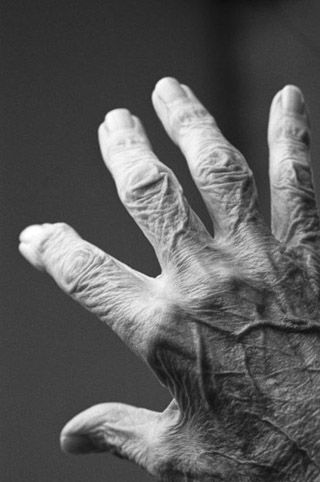 The hand of an older adult Biogerontology is the special sub-field of gerontology concerned with the biological aging process, its evolutionary origins, and potential means to intervene in the process. Aim of biogerontology is to prevent age-related disease by intervening in aging processes or even eliminate aging per se. Some argue that aging fits the criteria of disease, therefore aging is disease and should be treated as disease.[24][25][26] In 2008 Aubrey de Grey said that in case of suitable funding and involvement of specialists there is a 50% chance, that in 25–30 years humans will have technology saving people from dying of old age, regardless of the age at which they will be at that time.[27] His idea is to repair inside cells and between them all that can be repaired using modern technology, allowing people to live until time when technology progress will allow to cure deeper damage. This concept got the name "longevity escape velocity". A meta analysis of 36 studies concluded that there is an association between age and DNA damage in humans,[28] a finding consistent with the DNA damage theory of aging. |
下位分野 多くの学問分野がそうであるように、20世紀から21世紀にかけて、老年学の分野は、老化プロセスのますます狭い側面に焦点を当てた複数の特定の学問分野 に細分化されてきた[23]。 バイオジェロントロジー 主な記事 バイオジェロントロジー  高齢者の手 バイオジェロントロジーは、生物学的な老化プロセス、その進化的起源、およびそのプロセスに介入するための潜在的な手段に関するジェロントロジーの特別な 下位分野である。バイオジェロントロジーの目的は、老化プロセスに介入することで加齢に関連した病気を予防すること、あるいは老化そのものをなくすことで ある。2008年、オーブリー・デ・グレイは、適切な資金と専門家の関与があれば、25~30年後には、その時点の年齢にかかわらず、老衰による死亡から 人々を救う技術を人類が手にする可能性が50%あると述べた[27]。彼の考えは、現代の技術で修復可能なものはすべて細胞内や細胞間で修復し、技術の進 歩によってより深い損傷を治療できるようになるまで人民が生きられるようにすることである。この概念は「長寿脱出速度」と呼ばれるようになった。 36の研究のメタ分析によると、ヒトでは年齢とDNA損傷との間に関連性があり[28]、これはDNA損傷による老化説と一致する所見であると結論づけて いる。 |
| ocial gerontology Social gerontology is a multi-disciplinary sub-field that specializes in studying or working with older adults. Social gerontologists may have degrees or training in social work, nursing, psychology, sociology, demography, public health, or other social science disciplines. Social gerontologists are responsible for educating, researching, and advancing the broader causes of older people.[29] Because issues of life span and life extension need numbers to quantify them, there is an overlap with demography. Those who study the demography of the human life span differ from those who study the social demographics of aging. Social theories of aging Several theories of aging are developed to observe the aging process of older adults in society as well as how these processes are interpreted by men and women as they age.[30] Activity theory Activity theory was developed and elaborated by Cavan, Havighurst, and Albrecht. According to this theory, older adults' self-concept depends on social interactions. In order for older adults to maintain morale in old age, substitutions must be made for lost roles. Examples of lost roles include retirement from a job or loss of a spouse.[30] Activity is preferable to inactivity because it facilitates well-being on multiple levels. Because of improved general health and prosperity in the older population, remaining active is more feasible now than when this theory was first proposed by Havighurst nearly six decades ago. The activity theory is applicable for a stable, post-industrial society, which offers its older members many opportunities for meaningful participation. Weakness: Some aging persons cannot maintain a middle-aged lifestyle, due to functional limitations, lack of income, or lack of a desire to do so. Many older adults lack the resources to maintain active roles in society. On the flip side, some elders may insist on continuing activities in late life that pose a danger to themselves and others, such as driving at night with low visual acuity or doing maintenance work to the house while climbing with severely arthritic knees. In doing so, they are denying their limitations and engaging in unsafe behaviors.[31] Disengagement theory Disengagement theory was developed by Cumming and Henry. According to this theory, older adults and society engage in a mutual separation from each other. An example of mutual separation is retirement from the workforce. A key assumption of this theory is that older adults lose "ego-energy" and become increasingly self-absorbed. Additionally, disengagement leads to higher morale maintenance than if older adults try to maintain social involvement. This theory is heavily criticized for having an escape clause—namely, that older adults who remain engaged in society are unsuccessful adjusters to old age.[30] Gradual withdrawal from society and relationships preserves social equilibrium and promotes self-reflection for elders who are freed from societal roles. It furnishes an orderly means for the transfer of knowledge, capital, and power from the older generation to the young. It makes it possible for society to continue functioning after valuable older members die. Age stratification theory According to this theory, older adults born during different time periods form cohorts that define "age strata". There are two differences among strata: chronological age and historical experience. This theory makes two arguments. 1. Age is a mechanism for regulating behavior and as a result determines access to positions of power. 2. Birth cohorts play an influential role in the process of social change.[30] Life course theory According to this theory, which stems from the life course perspective aging occurs from birth to death. Aging involves social, psychological, and biological processes.[32] Additionally, aging experiences are shaped by cohort and period effects.[30] Also reflecting the life course focus, consider the implications for how societies might function when age-based norms vanish—a consequence of the deinstitutionalization of the life course—and suggest that these implications pose new challenges for theorizing aging and the life course in postindustrial societies. Dramatic reductions in mortality, morbidity, and fertility over the past several decades have so shaken up the organization of the life course and the nature of educational, work, family, and leisure experiences that it is now possible for individuals to become old in new ways. The configurations and content of other life stages are being altered as well, especially for women. In consequence, theories of age and aging will need to be reconceptualized.[33] Cumulative advantage/disadvantage theory According to this theory, which was developed beginning in the 1960s by Derek Price and Robert Merton and elaborated on by several researchers such as Dale Dannefer,[34] inequalities have a tendency to become more pronounced throughout the aging process. A paradigm of this theory can be expressed in the adage "the rich get richer and the poor get poorer". Advantages and disadvantages in early life stages have a profound effect throughout the life span. However, advantages and disadvantages in middle adulthood have a direct influence on economic and health status in later life.[30] |
社会的老年学 社会ジェロントロジーは、高齢者の研究または高齢者と関わることを専門とする、学際的な下位分野である。ソーシャル・ジェロントロジストは、ソーシャル ワーク、看護、心理学、社会学、人口学、保健、またはその他の社会科学分野の学位や訓練を受けている可能性がある。社会ジェロントロジストは、高齢者の幅 広い原因を教育、研究、促進する責任を担っている[29]。 寿命や延命の問題を定量化するには数字が必要であるため、人口学と重なる部分がある。人間の寿命の人口統計を研究する者は、高齢化の社会人口統計を研究す る者とは異なる。 老化の社会理論 社会における高齢者の加齢過程を観察するため、また加齢に伴ってこれらの過程が男女によってどのように解釈されるかを観察するために、いくつかの加齢理論 が開発されている[30]。 活動理論 活動理論は、Cavan、Havighurst、Albrechtによって開発され、精緻化された。この理論によれば、高齢者の自己概念は社会的相互作用 に依存している。高齢者が老年期にモラールを維持するためには、失われた役割の代替がなされなければならない。失われた役割の例としては、仕事からの引退 や配偶者の喪失などが挙げられる[30]。 活動は、多面的に幸福を促進するため、不活動よりも望ましい。高齢者人口の全般的な保健衛生の向上と豊かさのため、60年近く前にハヴィガーストによって この理論が初めて提唱されたときよりも、現在では活動的であり続けることがより実現可能になっている。活動理論は、高齢者に有意義な参加の機会を多く提供 する、安定した産業革命後の社会にも当てはまる。弱点: 高齢者の中には、機能的な限界、収入不足、意欲の欠如などの理由で、中高年のライフスタイルを維持できない人もいる。多くの高齢者は、社会で積極的な役割 を維持するための資源を欠いている。その反面、視力が低下した状態で夜間の運転をしたり、重度の関節炎を患った膝で登りながら家の手入れをしたりするな ど、自分自身や他人に危険を及ぼすような活動を後期高齢者になっても続けようと主張する人もいる。そうすることで、自分の限界を否定し、危険な行動に関与 していることになる。 離脱理論 離脱理論は、カミングとヘンリーによって開発された。この理論によると、高齢者と社会は互いに分離している。相互離反の例として、労働力からの引退が挙げ られる。この理論の主要な仮定は、高齢者が「自我エネルギー」を失い、ますます自己中心的になることである。さらに、離職は、高齢者が社会的関与を維持し ようとする場合よりも、高いモラール維持につながる。この理論は、逃げ口上、すなわち、社会に関与し続ける高齢者は老年への適応に失敗するという批判が多 い[30]。 社会や人間関係から徐々に離れていくことは、社会の均衡を保ち、社会的役割から解放された高齢者の自己反省を促す。それは、知識、資本、権力を年長世代か ら若年世代に移転するための秩序だった手段を提供する。貴重な高齢者が亡くなった後も、社会が機能し続けることを可能にする。 年齢階層説 この理論によれば、異なる時代に生まれた高齢者は、「年齢層」を定義するコホートを形成する。階層には、年代と歴史的経験の2つの違いがある。この理論に は2つの主張がある。1. 年齢は行動を規制するメカニズムであり、結果として権力の座へのアクセスを決定する。2. 出生コホートは社会変化の過程において影響力のある役割を果たす。 ライフコース理論 ライフコース理論によれば、老化は誕生から死に至るまで起こる。加えて、加齢体験はコーホート効果や時代効果によって形成される[32]。 また、ライフコースに焦点を当て、ライフコースの脱制度化の結果である、年齢に基づく規範が消滅した場合に社会がどのように機能するかという意味合いにつ いて考察し、これらの意味合いが産業革命後の社会における加齢とライフコースの理論化に新たな課題をもたらすことを示唆している。過去数十年にわたる死亡 率、罹患率、出生率の劇的な低下により、ライフコースの構成や教育、仕事、家族、余暇体験の性質が大きく揺らぎ、個人が新たな方法で老いることが可能に なった。他のライフステージの構成や内容も、特に女性にとって同様に変化している。その結果、年齢と加齢に関する理論は、再概念化される必要がある [33]。 累積的有利不利理論 1960年代にデレク・プライスとロバート・マートンによって提唱され、デール・ダンネファー[34]などの複数の研究者によって精緻化されたこの理論に よれば、不平等は加齢の過程を通じてより顕著になる傾向がある。この理論のパラダイムは、「金持ちはより金持ちになり、貧乏人はより貧乏になる」という格 言で表現することができる。人生の初期段階における有利不利は、生涯を通じて大きな影響を及ぼす。しかし、成人期中期の長所と短所は、その後の人生におけ る経済状態や保健状態に直接的な影響を及ぼす[30]。 |
| Environmental gerontology Environmental gerontology is a specialization within gerontology that seeks an understanding and interventions to optimize the relationship between aging persons and their physical and social environments.[35][36][37] The field emerged in the 1930s during the first studies on behavioral and social gerontology. In the 1970s and 1980s, research confirmed the importance of the physical and social environment in understanding the aging population and improved the quality of life in old age.[38] Studies of environmental gerontology indicate that older people prefer to age in their immediate environment, whereas spatial experience and place attachment are important for understanding the process.[39] Some research indicates that the physical-social environment is related to the longevity and quality of life of the elderly. Precisely, the natural environment (such as natural therapeutic landscapes, therapeutic garden) contributes to active and healthy aging in the place.[40][41] |
環境ジェロントロジー(環境老年学) 環境老年学(Environmental gerontology)とは、老年学の中の専門分野のひとつであり、高齢化する人格とその物理的・社会的環境との関係を最適化するための理解と介入を模 索するものである[35][36][37]。 この分野は、1930年代に行動老年学および社会老年学に関する最初の研究において出現した。1970年代から1980年代にかけて、高齢化社会を理解 し、高齢期の生活の質を向上させる上で、物理的・社会的環境が重要であることが研究により確認された[38]。環境老年学の研究によれば、高齢者は身近な 環境の中で老いることを好むが、そのプロセスを理解するためには空間的経験と場所への愛着が重要であることが示されている[39]。 物理的・社会的環境が高齢者の長寿と生活の質に関係していることを示す研究もある。正確には、自然環境(自然の治療的景観、治療的庭園など)は、その場に おける活動的で健康的な老いに寄与する[40][41]。 |
| Jurisprudential gerontology Jurisprudential gerontology (sometimes referred to as "geriatric jurisprudence") is a specialization within gerontology that looks into the ways laws and legal structures interact with the aging experience. The field started from legal scholars in the field of elder law, which found that looking into legal issues of older persons without a broader inter-disciplinary perspective does not provide the ideal legal outcome. Using theories such as therapeutic jurisprudence, jurisprudential scholars critically examined existing legal institutions (e.g. adult guardianship, end of life care, or nursing homes regulations) and showed how law should look more closely to the social and psychological aspects of its real-life operation.[42] Other streams within jurisprudential gerontology also encouraged physicians and lawyers to try to improve their cooperation and better understand how laws and regulatory institutions affect health and well-being of older persons.[43] |
老年法学 法学的老年学(「老年法学」と呼ばれることもある)は、老年学の中の専門分野の一つであり、法律や法的構造が加齢体験とどのように相互作用するかを研究す る学問である。この分野は、高齢者法の分野の法律学者から始まったもので、より広い学際的な視点なしに高齢人格の法的問題を調べても、理想的な法的結果は 得られないことがわかった。治療法学などの理論を用いて、法学研究者たちは既存の法制度(成年後見制度、終末期ケア、老人ホームの規制など)を批判的に検 討し、法律が現実の運用における社会的・心理的側面により密接に目を向けるべきことを示した[42]。法学的ジェロントロジーの中の他の流れもまた、医師 と弁護士が協力関係を改善し、法律や規制制度が高齢者の保健や福祉にどのような影響を与えるかをよりよく理解するよう促した[43]。 |
| Academic journals on gerontology Aging and memory Aging Portfolio Biological clock Bionics Clinical geropsychology Elderly care Financial gerontology Geriatrics Gerontotechnology Life extension List of life extension topics Old age Oldest people Silver Alert Timeline of senescence research |
老年学の学術雑誌 老化と記憶 老化ポートフォリオ 生物時計 バイオニクス 臨床老年心理学 高齢者ケア 財政老年学 老年医学 老年工学 延命 延命トピックのリスト 老年期 最高齢の人民 シルバーアラート 老化研究の年表 |
| References Harris, D.K. (1988). Dictionary of Gerontology. New York: Greenwood Press. p. 80. ISBN 9780313252877. Metchnikoff, Élie (1903). The Nature of Man: Studies in Optimistic Philosophy. Translated by Mitchell, P. Chalmers. New York and London: G.P. Putnam's Sons. OCLC 173625. Grignolio, Andrea; Franceschi, Claudio (2012-06-15). "History of Research into Ageing/Senescence". eLS. doi:10.1002/9780470015902.a0023955. ISBN 978-0470016176. Stambler, Ilia (2014-06-17). "The Unexpected Outcomes of Anti-Aging, Rejuvenation, and Life Extension Studies: An Origin of Modern Therapies". Rejuvenation Research. 17 (3): 297–305. doi:10.1089/rej.2013.1527. PMID 24524368. Hooyman, N.R.; Kiyak, H.A. (2011). Social gerontology: A multidisciplinary perspective (9th ed.). Boston: Pearson Education. ISBN 978-0205763139. Howell, Trevor H. (1987). "Avicenna and His Regimen of Old Age". Age and Ageing. 16 (1): 58–59. doi:10.1093/ageing/16.1.58. PMID 3551552. Ammar, S (1998). "Ibn Al Jazzar and the Kairouan médical school of the tenth century AD" (PDF). Vesaiius. 4 (1): 3–4. PMID 11620335. "Ibn al-Jazzār, Abū Ja'far Ahmad ibn Ibrāhīm ibn Abī Khālid (d. 979/369)". Islamic Medical Manuscripts. U.S. National Library of Medicine. Retrieved 24 September 2013. [Geritt Bos, Ibn al-Jazzar, Risala fi l-isyan (Treatise on forgetfulness), London, 1995] Al Jazzar Archived July 6, 2008, at the Wayback Machine "Specialized literature". Islamic culture and medical arts. U.S. National Library of Medicine. Retrieved 24 September 2013. Metchnikoff, E. (1903). The nature of man. Studies in optimistic philosophy. London: Heinemann. p. 298. An earlier usage, however, was recorded by German philosopher Wilhelm Traugott Krug in his General Dictionary of the Philosophical Sciences. According to Krug, the term Gerontologia is found in the Colloquies by Erasmus where it refers to the conversation of old men (colloquium senile). See Krug, 1838, p. 453-454. "About the National Institute on Aging". National Institute on Aging, US National Institutes of Health. 2018. Retrieved 5 March 2018. Newcomb, Beth (15 January 2016). "In memoriam: James E. Birren, 97". University of Southern California - News. Retrieved 5 March 2018. Burch, John B.; Augustine, Alison D.; Frieden, Leslie A.; Hadley, Evan; Howcroft, T. Kevin; Johnson, Ron; Khalsa, Partap S.; Kohanski, Ronald A.; Li, Xiao L.; Macchiarini, Francesca; Niederehe, George; Oh, Young S.; Pawlyk, Aaron C.; Rodriguez, Henry; Rowland, Julia H.; Shen, Grace L.; Sierra, Felipe; Wise, Bradley C. (8 May 2014). "Advances in Geroscience: Impact on Healthspan and Chronic Disease". The Journals of Gerontology Series A: Biological Sciences and Medical Sciences. 69 (Suppl 1): S1 – S3. doi:10.1093/gerona/glu041. PMC 4036419. PMID 24833579. Seals, Douglas R.; Justice, Jamie N.; Larocca, Thomas J. (2015). "Physiological geroscience: Targeting function to increase healthspan and achieve optimal longevity". The Journal of Physiology. 594 (8): 2001–2024. doi:10.1113/jphysiol.2014.282665. PMC 4933122. PMID 25639909. Kohanski, R. A.; Deeks, S. G; Gravekamp, C; Halter, J. B; High, K; Hurria, A; Fuldner, R; Green, P; Huebner, R; MacChiarini, F; Sierra, F (2016). "Reverse geroscience: How does exposure to early diseases accelerate the age-related decline in health?". Annals of the New York Academy of Sciences. 1386 (1): 30–44. Bibcode:2016NYASA1386...30K. doi:10.1111/nyas.13297. hdl:2027.42/135360. PMID 27907230. S2CID 13783275. Werner, Carrie A. (2010). "The Older Population: 2010" (PDF). 2010 Census Briefs. U.S. Census Bureau. C2010BR-09. Taylor, Albert W.; Johnson, Michel J. (2008). Physiology of Exercise and Healthy Aging. Human Kinetics. ISBN 978-0-7360-5838-4. "Population". 2008 Older Americans: Key indicators of Well-Being. 2008. Archived from the original on 2013-02-10. Retrieved 2013-01-04. "Institute for Geriatric Social Work". Boston University. Archived from the original on 2010-07-11. "Geriatric Social Work Initiative". Archived from the original on 2019-01-13. Retrieved 2010-05-20. Clair, Jeffrey M. (26 October 2018). The Gerontological Prism: Developing Interdisciplinary Bridges: Developing Interdisciplinary Bridges. Routledge. ISBN 978-1-351-84123-8. OCLC 1275064008. Stambler, Ilia (2017-10-01). "Recognizing Degenerative Aging as a Treatable Medical Condition: Methodology and Policy". Aging and Disease. 8 (5): 583–589. doi:10.14336/AD.2017.0130. PMC 5614323. PMID 28966803. The Lancet Diabetes & Endocrinology (2018-08-01). "Opening the door to treating ageing as a disease". The Lancet Diabetes & Endocrinology. 6 (8): 587. doi:10.1016/S2213-8587(18)30214-6. PMID 30053981. S2CID 51726070. Khaltourina, Daria; Matveyev, Yuri; Alekseev, Aleksey; Cortese, Franco; Ioviţă, Anca (July 2020). "Aging Fits the Disease Criteria of the International Classification of Diseases". Mechanisms of Ageing and Development. 189: 111230. doi:10.1016/j.mad.2020.111230. PMID 32251691. S2CID 214779653. de Grey, Aubrey D. N. J.; Rae, Michael (October 14, 2008). Ending Aging. St. Martin's Griffin. p. 15. ISBN 978-0312367077. Soares JP, Cortinhas A, Bento T, Leitão JC, Collins AR, Gaivão I, Mota MP. Aging and DNA damage in humans: a meta‐analysis study. Aging (Albany NY). 2014 Jun;6(6):432-9. doi: 10.18632/aging.100667. PMID 25140379; PMCID: PMC4100806 Putney, Norella M.; Alley, Dawn E.; Bengtson, Vern L. (2005). "Social Gerontology as Public Sociology in Action". The American Sociologist. 36 (3). Springer Publishing: 88–104. doi:10.1007/s12108-005-1018-9. JSTOR 27700435. S2CID 37631486. As a multidisciplinary field engaged in basic and applied research and practice, social gerontology's major aim is to improve the lives of older people and to ameliorate problems associated with age and aging. Phillipson, C.; Baars, J. (2007). "Ch. 4: Social theory and social aging". In Bond, J.; Peace, S. M.; Dittmann-Kohli, F.; Westerhof, G. (eds.). Aging in Society (3rd ed.). SAGE. pp. 68–84. ISBN 978-1-4129-0020-1. VickyRN. (August 2, '09). Theories of Aging (Part 3) - Sociological Theories. Retrieved Friday, April 20, 2012, from http://allnurses-breakroom.com/showthread.php?t=412760 Bengtson, Vern L.; Allen, Katherine R. (1993), Boss, Pauline; Doherty, William J.; LaRossa, Ralph; Schumm, Walter R. (eds.), "The Life Course Perspective Applied to Families over Time", Sourcebook of Family Theories and Methods, Boston, MA: Springer US, pp. 469–504, doi:10.1007/978-0-387-85764-0_19, ISBN 978-0-306-44264-3, retrieved 2022-11-18 Rowe, J.W.; Kahn, R.L. (1998). Successful aging. Vol. 10. New York: Pantheon. pp. 142–4. ISBN 978-0375400452. PMID 9666196. Webster, N. (2003). Webster's new American dictionary. New York: HarperCollins. Dannefer D (November 2003). "Cumulative advantage/disadvantage and the life course: cross-fertilizing age and social science theory". J Gerontol B Psychol Sci Soc Sci. 58 (6): S327–37. doi:10.1093/geronb/58.6.S327. PMID 14614120. S2CID 1092132. Sanchez-Gonzalez, D.; Rodriguez-Rodriguez, V. (2016). Environmental Gerontology in Europe and Latin America. Policies and perspectives on environment and aging. New York: Springer Publishing Company. p. 284. ISBN 978-3-319-21418-4. Rowles, Graham D.; Bernard, Miriam (2013). Environmental Gerontology: Making Meaningful Places in Old Age. New York: Springer Publishing Company. p. 320. ISBN 978-0826108135. Scheidt, Rick J.; Schwarz, Benyamin (2013). Environmental Gerontology. What Now?. New York: Routledge. p. 338. ISBN 978-0-415-62616-3. Wahl, H-W.; Scheidt, R.J.; Windley, P.G. (2004). Annual Review of Gerontology and Geriatrics. Focus on Aging context: Socio-Physical Environments. New York: Springer Publishing Company. p. 384. ISBN 978-0826117342. Andrews, GJ.; Phillips, DR. (2005). Aging and Place: Perspectives, Policy, Practice. London: Routledge. p. 272. ISBN 978-0415481656. Sanchez-Gonzalez, D (2015). "Physical-social environments and aging population from environmental gerontology and geography. Socio-spatial implications in Latin America". Revista de Geografía Norte Grande. 60 (60): 97–114. doi:10.4067/S0718-34022015000100006. Sanchez-Gonzalez, D.; Adame-Rivera, LM.; Rodriguez-Rodriguez, V. (2018). "Natural landscape and healthy aging in place: The case of the Cumbres of Monterrey National Park in Mexico". Boletín de la Asociación de Geógrafos Españoles. 76 (76): 20–51. doi:10.21138/bage.2514. hdl:10261/163106. Kapp, Marshall B. (1996). "Therapeutic Jurisprudence and End-of-Life Medical Care: Physician Perceptions of a Statute's Impact Medical Law 15 Medicine and Law 1996". Medicine and Law. 15 (2): 201–17. PMID 8908972. Retrieved 2018-03-20. Doron, Israel; Meenan, Helen (2012). "Time for Geriatric Jurisprudence". Gerontology. 58 (3): 193–6. doi:10.1159/000335324. ISSN 0304-324X. PMID 22538767. S2CID 21550838. |
参考文献 Harris, D.K. (1988). 老年学辞典. ニューヨーク: Greenwood Press. ISBN 9780313252877. Metchnikoff, Élie (1903). 人間の本質: 楽観主義哲学の研究. Mitchell, P. Chalmers訳. ニューヨーク、ロンドン: G.P. Putnam's Sons. OCLC 173625. Grignolio, Andrea; Franceschi, Claudio (2012-06-15). 「加齢/老化研究の歴史」. eLS. doi:10.1002/9780470015902.a0023955. ISBN 978-0470016176. Stambler, Ilia (2014-06-17). 「アンチエイジング、若返り、延命研究の予期せぬ成果: 現代療法の原点」. 若返り研究。17 (3): 297–305. doi:10.1089/rej.2013.1527. PMID 24524368. Hooyman, N.R.; Kiyak, H.A. (2011). 社会的老年学: A multidisciplinary perspective(第9版). ボストン: Pearson Education. ISBN 978-0205763139. Howell, Trevor H. (1987). 「Avicenna and His Regimen of Old Age」. Age and Ageing. 16 (1): 58–59. doi:10.1093/ageing/16.1.58. PMID 3551552. Ammar, S (1998). 「Ibn Al Jazzar and the Kairouan médical school of the 10th century AD" (PDF). Vesaiius. 4 (1): 3-4. PMID 11620335. 「Ibn al-Jazzār, Abū Ja'far Ahmad ibn Ibrāhīm ibn Abī Khālid (d. 979/369)」. Islamic Medical Manuscripts. U.S. National Library of Medicine. 2013年9月24日取得。 [ゲリット・ボス、イブン・アル・ジャッザー『物忘れ論』、ロンドン、1995年]. アル・ジャッザー Archived July 6, 2008, at the Wayback Machine 「専門文献」. イスラム文化と医術. U.S. National Library of Medicine. 2013年9月24日閲覧。 Metchnikoff, E. (1903). The nature of man. The nature of man. London: Heinemann. p. 298. しかし、それ以前の用法は、ドイツの哲学者ヴィルヘルム・トラウゴット・クルーグが『哲学科学総辞典』の中で記録している。クルーグによれば、 Gerontologiaという用語はエラスムスの『Colloquies』にあり、そこでは老人の会話(colloquium senile)を指している。Krug, 1838, p. 453-454を参照のこと。 「国立老化研究所について」. National Institute on Aging, US National Institutes of Health. 2018. 2018年3月5日取得。 Newcomb, Beth (15 January 2016). 「追悼: James E. Birren, 97」. University of Southern California - News. 2018年3月5日取得。 Burch, John B.; Augustine, Alison D.; Frieden, Leslie A.; Hadley, Evan; Howcroft, T. Kevin; Johnson, Ron; Khalsa, Partap S.; Kohanski, Ronald A.; Li, Xiao L.; Macchiarini, Francesca. マッキアリーニ,フランチェスカ; ニーデレヘ,ジョージ; オー,ヤング・S.; ポーリック,アーロン・C.; ロドリゲス,ヘンリー; ローランド,ジュリア・H.; シェン,グレース・L.; シエラ,フェリペ; ワイズ,ブラッドリー・C. (8 May 2014). 「老年科学の進歩: 健康寿命と慢性疾患への影響」. The Journals of Gerontology Series A: Biological Sciences and Medical Sciences. 69 (Suppl 1): S1 - S3. doi:10.1093/gerona/glu041. PMC 4036419. PMID 24833579. Seals, Douglas R.; Justice, Jamie N.; Larocca, Thomas J. (2015). 「Physiological geroscience: 健康寿命を延ばし、最適な長寿を達成するために機能を標的とする」. The Journal of Physiology. 594 (8): 2001–2024. doi:10.1113/jphysiol.2014.282665. PMC 4933122. PMID 25639909. Kohanski, R. A.; Deeks, S. G; Gravekamp, C; Halter, J. B; High, K; Hurria, A; Fuldner, R; Green, P; Huebner, R; MacChiarini, F; Sierra, F (2016). 「リバース・ジェロサイエンス: どのように初期の疾患にさらされると、加齢に伴う保健の低下が加速されるのか?」. Annals of the New York Academy of Sciences. 1386 (1): 30-44. Bibcode:2016NYASA1386...30K. doi:10.1111/nyas.13297. hdl:2027.42/135360. PMID 27907230. S2CID 13783275. Werner, Carrie A. (2010). 「The Older Population: 2010" (PDF). 2010 Census Briefs. 米国国勢調査局。C2010BR-09. Taylor, Albert W.; Johnson, Michel J. (2008). 運動と健康な加齢の生理学。Human Kinetics. ISBN 978-0-7360-5838-4. 「Population」. 2008 Older Americans: ウェルビーイングの主要指標。2008. Archived from the original on 2013-02-10. 2013-01-04. 「老年ソーシャルワーク研究所」. ボストン大学。2010-07-11に原文からアーカイブされた。 「Geriatric Social Work Initiative」. 2019-01-13にオリジナルからアーカイブされた。2010-05-20を参照。 Clair, Jeffrey M. (26 October 2018). 老年学プリズム: 学際的な架け橋を開発する: Developing Interdisciplinary Bridges. Routledge. ISBN 978-1-351-84123-8. OCLC 1275064008. Stambler, Ilia (2017-10-01). 「Recognizing Degenerative Aging as a Treatable Medical Condition: Methodology and Policy」. Aging and Disease. 8 (5): 583–589. doi:10.14336/AD.2017.0130. PMC 5614323. PMID 28966803. The Lancet Diabetes & Endocrinology (2018-08-01). 「病気として老化を治療するための扉を開く」. The Lancet Diabetes & Endocrinology. 6 (8): 587. doi:10.1016/S2213-8587(18)30214-6. PMID 30053981. S2CID 51726070. Khaltourina, Daria; Matveyev, Yuri; Alekseev, Aleksey; Cortese, Franco; Ioviţă, Anca (July 2020). 「加齢は国際疾病分類の疾病基準に適合する」. Mechanisms of Ageing and Development. 189: 111230. doi:10.1016/j.mad.2020.111230. PMID 32251691. S2CID 214779653. de Grey, Aubrey D. N. J.; Rae, Michael (October 14, 2008). 老化を終わらせる。St. Martin's Griffin. ISBN 978-0312367077. Soares JP, Cortinhas A, Bento T, Leitão JC, Collins AR, Gaivão I, Mota MP. ヒトにおける加齢とDNA損傷:メタアナリシス研究。Aging (Albany NY). 2014 Jun;6(6):432-9. doi: 10.18632/aging.100667. pmid 25140379; pmcid: pmc4100806 Putney, Norella M.; Alley, Dawn E.; Bengtson, Vern L. (2005). 「公共社会学としてのソーシャル・ジェロントロジーの実践」. The American Sociologist. 36 (3). doi:10.1007/s12108-005-1018-9. jstor 27700435. s2cid 37631486. 社会ジェロントロジーの主な目的は、高齢者の生活を改善し、加齢や老化に伴う問題を改善することである。 Phillipson, C.; Baars, J. (2007). 「第4章:社会理論と社会的加齢」。Bond, J.; Peace, S. M.; Dittmann-Kohli, F.; Westerhof, G. (eds.). Aging in Society(第3版). 68-84 頁。ISBN 978-1-4129-0020-1. VickyRN. (August 2, '09). 老いの理論(その3)-社会学的理論. 2012年4月20日(金)、http://allnurses-breakroom.com/showthread.php?t=412760。 Bengtson, Vern L.; Allen, Katherine R. (1993), Boss, Pauline; Doherty, William J.; LaRossa, Ralph; Schumm, Walter R. (eds.), 「The Life Course Perspective Applied to Families over Time」, Sourcebook of Family Theories and Methods, Boston, MA: Springer US, pp.469-504, doi:10.1007/978-0-387-85764-0_19, ISBN 978-0-306-44264-3, retrieved 2022-11-18. Rowe, J.W.; Kahn, R.L. (1998). Successful aging. 第10巻。ニューヨーク: Pantheon. ISBN 978-0375400452. PMID 9666196. Webster, N. (2003). Webster's new American dictionary. New York: HarperCollins. Dannefer D (November 2003). 「累積的な優位性/不利性とライフコース:年齢と社会科学理論の相互肥沃化」. J Gerontol B Psychol Sci Soc Sci: S327–37. doi:10.1093/geronb/58.6.S327. PMID 14614120. S2CID 1092132. Sanchez-Gonzalez, D.; Rodriguez-Rodriguez, V. (2016). ヨーロッパとラテンアメリカにおける環境老年学。環境と高齢化に関する政策と展望。New York: Springer Publishing Company. ISBN 978-3-319-21418-4. Rowles, Graham D.; Bernard, Miriam (2013). 環境老年学: Making Meaningful Places in Old Age. New York: Springer Publishing Company. ISBN 978-0826108135. Scheidt, Rick J.; Schwarz, Benyamin (2013). Environmental Gerontology. What Now? New York: Routledge. ISBN 978-0-415-62616-3. Wahl, H-W.; Scheidt, R.J.; Windley, P.G. (2004). Annual Review of Gerontology and Geriatrics. 加齢の背景に焦点を当てる: 社会的・物理的環境。ニューヨーク: Springer Publishing Company. ISBN 978-0826117342. Andrews, GJ.; Phillips, DR. (2005). 高齢化と場所: Perspectives, Policy, Practice. London: Routledge. ISBN 978-0415481656. Sanchez-Gonzalez, D (2015). 「Physical-social environments and aging population from environmental gerontology and geography. ラテンアメリカにおける社会空間的意味合い」. Revista de Geografía Norte Grande. 60 (60): 97–114. doi:10.4067/S0718-34022015000100006. Sanchez-Gonzalez, D.; Adame-Rivera, LM.; Rodriguez-Rodriguez, V. (2018). 「自然の景観と健康的な高齢化: The case of the Cumbres of Monterrey National Park in Mexico」. Boletín de la Asociación de Geógrafos Españoles. 76 (76): 20-51. doi:10.21138/bage.2514. hdl:10261/163106. Kapp, Marshall B. (1996). 「治療法学と終末期医療: 医師が認識する法規制の影響 医療法15 医学と法 1996」. 医学と法. 15 (2): 201-17. PMID 8908972. 2018-03-20を取得した。 Doron, Israel; Meenan, Helen (2012). 「Time for Geriatric Jurisprudence」. Gerontology. 58 (3): 193-6. doi:10.1159/000335324. ISSN 0304-324X. PMID 22538767. S2CID 21550838. |
| https://en.wikipedia.org/wiki/Gerontology |
リンク
文献
その他の情報


++
Copyleft,
CC, Mitzub'ixi Quq Chi'j, 1996-2099